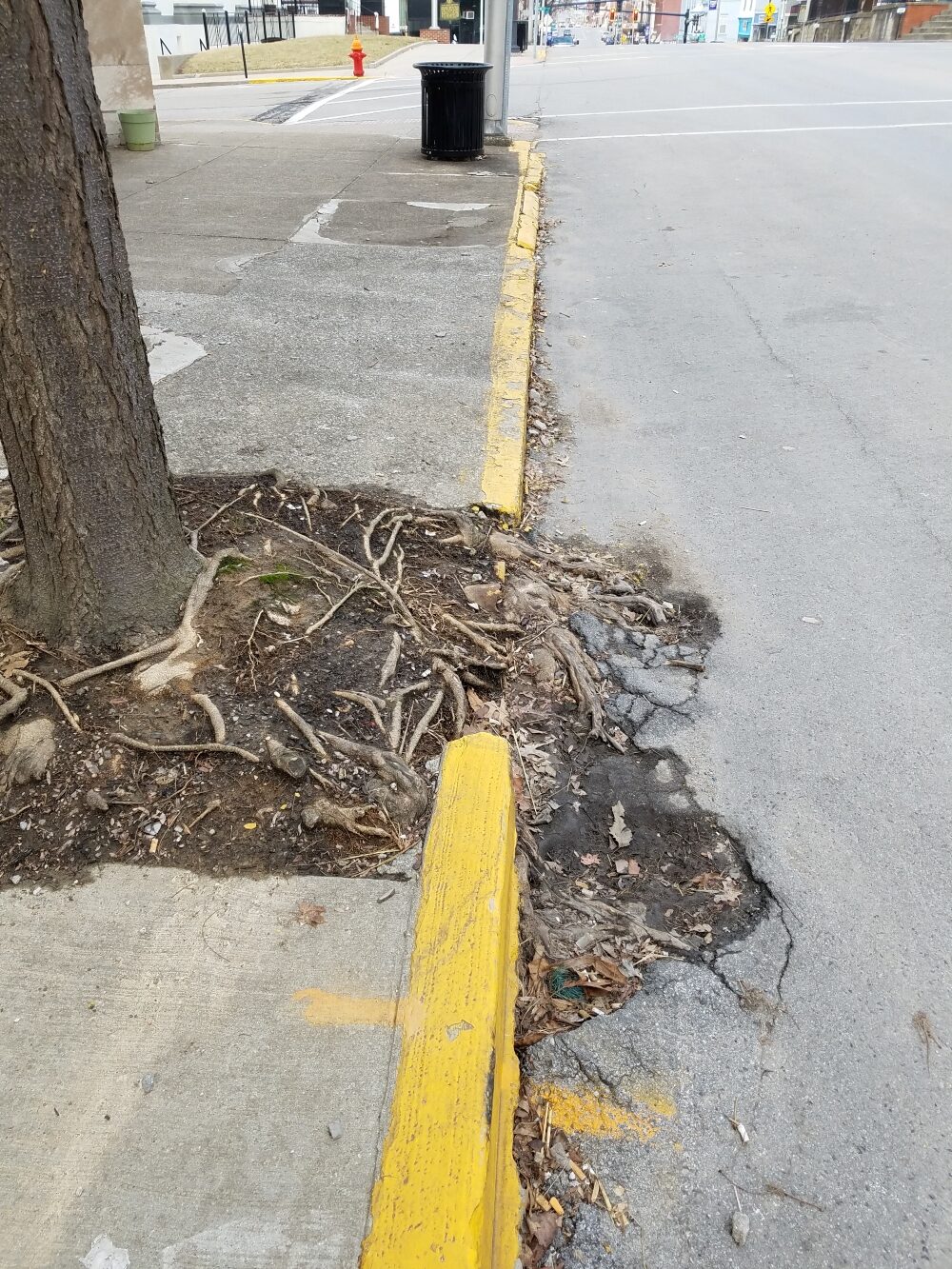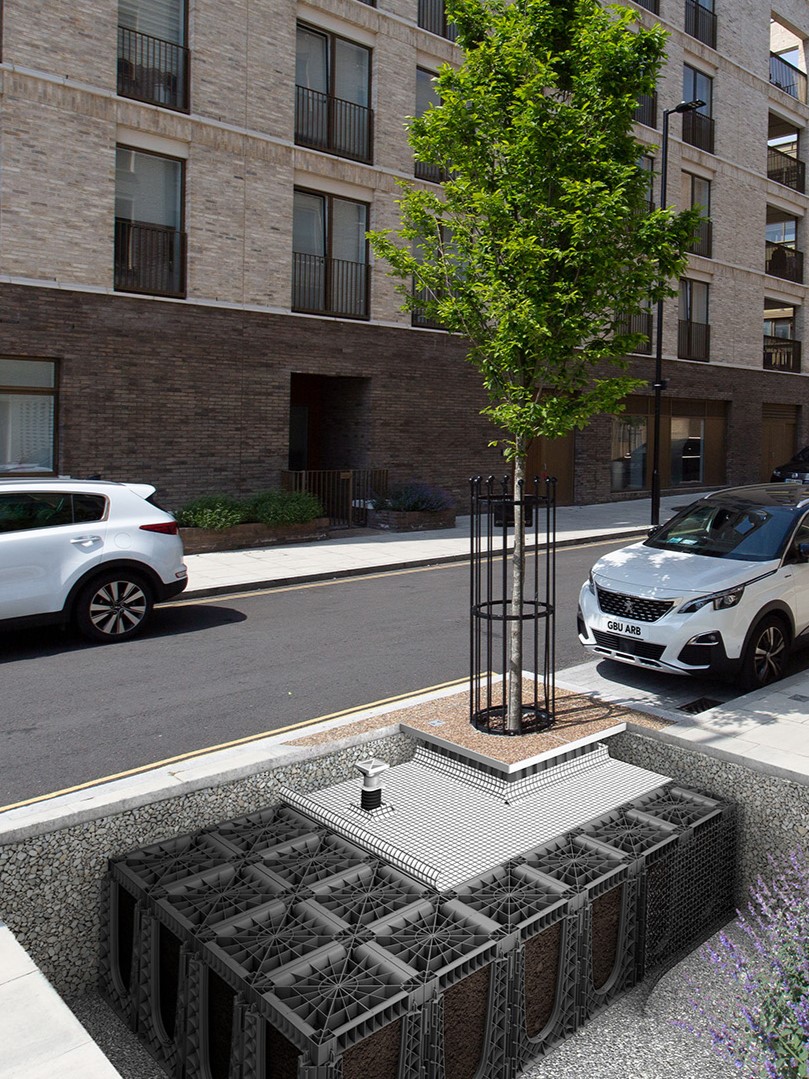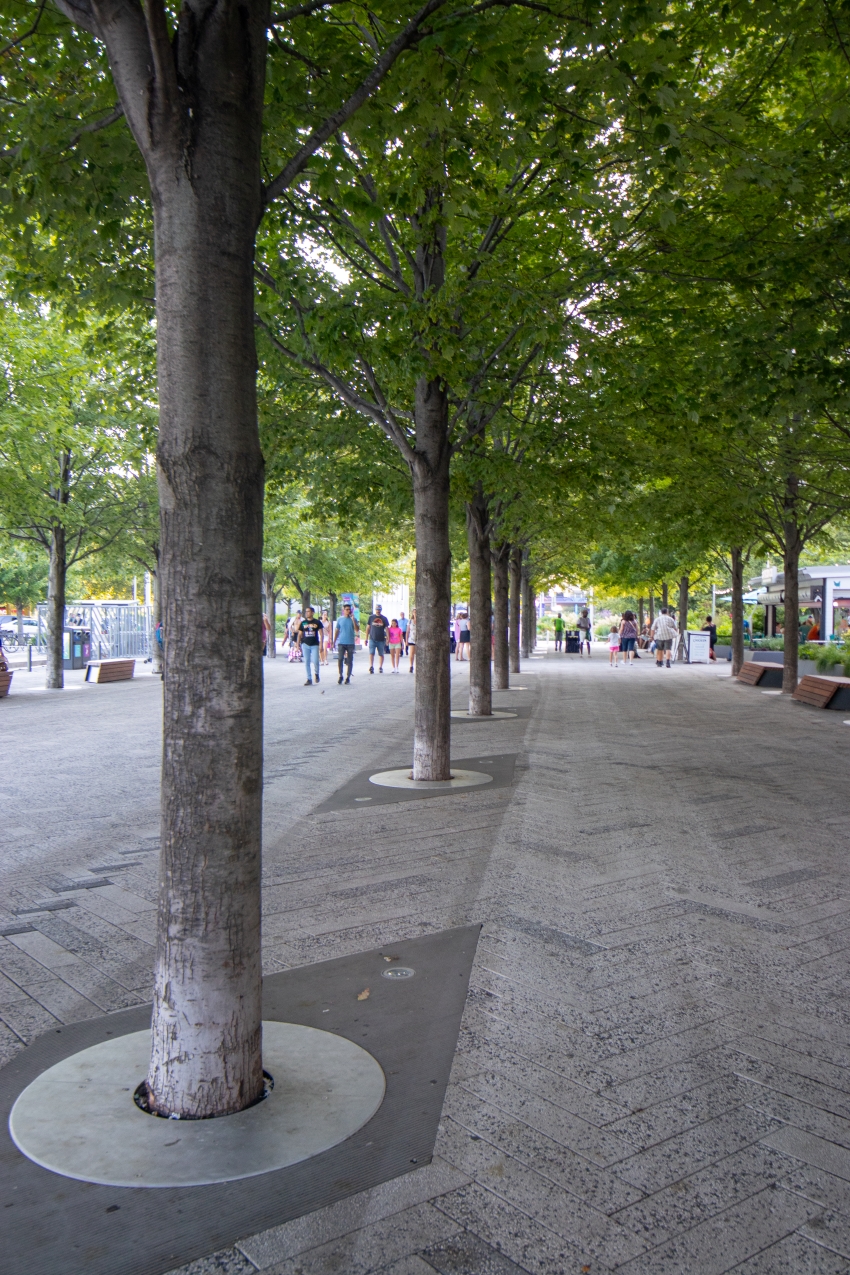It’s important to have trees in cities for so many well-proven reasons. Without adequate consideration, however, urban trees can cause costly damage to surrounding infrastructure. Pavement damage is among the most common issues, caused by the occurrence of root heave.

What is Root Heave?
Root heave, sometimes called pavement heave, is triggered by tree roots that do not have sufficient growing space underground. Soil, when compacted to support pavement, has very minimal air pockets for the roots to grow into.
Roots are opportunistic by nature and take the path of least resistance. If that means the space between compacted soil and the hardscape surface, that’s exactly where they’ll attempt to grow. The tree roots then colonize immediately underneath the hardscape surface. This causes the paved surface to lift, crack, and create aesthetic and safety issues.
In addition to its unsightly appearance, root heave causes tripping hazards, posing major liability risks for municipalities.
Avoiding Root Heave
Adequate Nutrients
Specifying adequate uncompacted soil volume below paved areas to allow space for tree roots to establish is critical. Again, roots naturally take the path of least resistance. If enough uncompacted, healthy soil is provided within the tree pit, the roots will not have to seek elsewhere for the nutrients they require.
However, roads and parking lots need a structurally sound base that will withstand heavy loads for long periods of time. To support pavement, soil needs to be compacted to at least 95%, which completely restricts root growth.
Load-bearing soil cells are a creative solution that serve as a mediator, supporting the pavement, and providing for the needs of the tree. Soil cells hold large amounts of uncompacted soil, providing ample space for tree roots to grow. They also provide structural stability for paved surfaces that can withstand pedestrian and vehicular traffic.

The RootSpace Airform soil cell not only provides soil, but the specially designed lid creates an essential air zone above it, promoting healthy, aerated soil.
And coupled with RootRain irrigation, which provides deep irrigation to the critical root zone, the roots have everything they need within the tree pit and do not need to grow outside of it.
Root Management Products
Avoiding root heave starts with ensuring enough uncompacted soil, water, and air. However, the care and allowance for growing roots can be equally important.
Root management products that ensure roots stay in intended areas and away from paved surfaces, utilities, and other infrastructure are critical.


Our ReRoot barrier diverts roots downwards to a level where they can safely establish without surface damage.
Our RootStop barrier wraps around the outside of the system and keeps roots within.
You can learn more about the options available by downloading our free Root Management Selection Chart.
Space Around the Trunk
Allowing enough space between the trunk of the tree and the surrounding pavement to provide for the zone of rapid taper is equally important, especially for tree species with large buttress root patterns. Dr. Kim Coder from the University of Georgia has written extensively on the importance of the ZRT having sufficient room to expand as the tree grows. ZRT measurements are available for reference.
But how can we calculate the necessary space between a tree and the nearest hardscape surface? Ross Clark from Trees Impact Group coined the handy formula below which helps estimate the required space.
Planting Distance = DBH x 3.5
We measure planting distance from the center of the planting zone and estimate the tree’s Diameter at Breast Height (DBH) at maturity. Keep in mind that this formula provides only estimated planting distances, which should serve as a guide rather than a strict rule. For more specific advice, refer to a consulting arborist.


Managing Tree Roots in Urban Settings
Characteristically, trees and cities do not coexist. Trees are meant to be in natural forest settings, while cities are made up of manmade components. Roads, sidewalks, and utilities are all designed to cater to our needs as residents but oppose the needs of trees.
Systems need to be considered that answer the need on both sides. First and foremost, we need to protect and maintain the built infrastructure around urban trees to eliminate costly repair requirements and liabilities. Secondly, we need to plant healthy trees that will flourish and benefit the urban environment. To do this, we need to specify urban tree planting systems that will provide adequate growing conditions, without compromising surface strength or other surrounding infrastructure.
